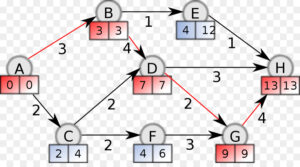Remember the movie “Top Gun”? If you are old enough, you must have watched it. There is a sentence that you will repeat now and then in FMCG
“I have the need, the need for speed!”
Fast-moving consumer goods are indeed fast. On average, the stock levels are available for around seven to fifteen days of average consumption. I have seen more than one company that has stocks for three days or less! So, as you can already assume, it is all about speed, planning and forecasting. There is no time to collect quotes every time and go into long negotiations. The good thing, on the other side, is that the products are quite standard. They also, in general, do not change too much. In my career, I have seen less than 10% of the items changing throughout the year.
Be fast, but careful
How to deal with thousands of SKU’s that rotate so fast? Streamlining processes. You need to have specifications prepared and signed off well in advance. All communication with suppliers done. A PRO tip here: ask suppliers to send their complete product list in Excel by mail. And then put them all in one folder in Outlook. The search function can go through the attachments as well. So, you will be able to find the product you are looking for. Most wholesalers have thousands of lines available. And this is a convenient way to find what you are looking for.
Use technology
Then we go into tendering and contracting. This is the part where e-tendering and e-auctions show their strength. As the products are very standard and there are many traders, the competition is fierce.
Once the contract is in place, for products where the consumption is regular create open LPO’s. Those are LPO’s where the quantity will be delivered in more than one delivery. Stores will just request delivery if and when needed. And your team can focus on the next group of items. The next good thing in FMCG is that the 80/20 rule applies almost every time. The top 20% of the SKU’s require your close attention. The rest is only about getting it right.
Don’t forget, it is food
Then comes the next catch-22 in this industry. Most of your SKU’s are food items. They need to be kept chilled or frozen. And have expiration dates. I agree this is not procurement related. But it does affect our job. Sometimes suppliers have only near expiry stock. And sometimes they give a good discount if you take it. But your quality assurance will go wild. Know your consumption patterns. Have open and direct communication with suppliers and stakeholders. Only this can save you millions already.
Frozen and chilled items have their limitations. Logistics is a bit more complicated. Storage is as well always limited, and you have to plan your deliveries properly. For me, it was a nightmare in one case, as we had a product with irregular consumption. We could store 15 days of stock, and the supplier needed 5 days to produce the next batch. So I had to place the order once we are halfway through. And hope that the consumption pattern stays the same and that the supplier delivers on time. Or else I’m out of stock.
Getting the right taste
And then, the last nightmare. Stakeholders. Specifications in the Food and Beverage industry are unfortunately just guidelines. For example, imagine buying beef in the supermarket. There are at least ten different cuts, countries of origin and breeds. And now try discussing all this with a person who is cutting and cooking beef for the past 15 years. And your goal is to convince him to take the cheaper option. While the finished product still needs to be as expected. The only solution I found is to get involved. Cooking is anyhow something most of us are somehow involved in. Get into the kitchen and spend some time with the chefs. Your family will love you if you learn to cook a couple of great dishes. And the chefs will explain what are they looking for in meats, fruits, vegetables or spices.
FMCG and F&B are industries that value speed above anything. The volumes are high, so every cent of price reduction turns into thousands at the end of the year. Streamline processes, focus on the big SKU’s. And you will love it.



